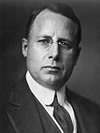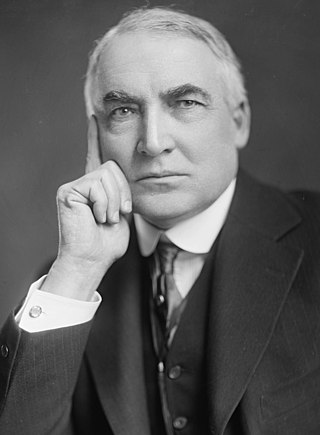
The 1920 United States presidential election was the 34th quadrennial presidential election, held on Tuesday, November 2, 1920. In the first election held after the end of the World War and the first election after the ratification of the Nineteenth Amendment, Republican Senator Warren G. Harding of Ohio defeated Democratic Governor James M. Cox of Ohio. Both major-party vice-presidential nominees would later succeed to the presidency: Calvin Coolidge (Republican) upon Harding's death in 1923 and Franklin D. Roosevelt (Democratic) after defeating Republican President Herbert Hoover in 1932. This was one of only six presidential elections where both major candidates had the same home state.

The 1924 United States presidential election was the 35th quadrennial presidential election, held on Tuesday, November 4, 1924. In a three-way contest, incumbent Republican President Calvin Coolidge won election to a full term. Coolidge was the second vice president to ascend to the presidency and then win a full term.

William Gibbs McAdoo Jr. was an American lawyer and statesman. McAdoo was a leader of the Progressive movement and played a major role in the administration of his father-in-law President Woodrow Wilson. A member of the Democratic Party, he also represented California in the United States Senate.
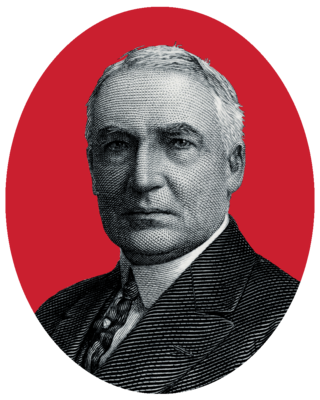
The 1920 Republican National Convention nominated Ohio Senator Warren G. Harding for president and Massachusetts Governor Calvin Coolidge for vice president. The convention was held in Chicago, Illinois, at the Chicago Coliseum from June 8 to June 12, 1920, with 940 delegates. Under convention rules, a majority plus one, or at least 471 of the 940 delegates, was necessary for a nomination.

The 1924 Democratic National Convention, held at the Madison Square Garden in New York City from June 24 to July 9, 1924, was the longest continuously running convention in United States political history. It took a record 103 ballots to nominate a presidential candidate. It was the first major party national convention that saw the name of a woman, Lena Springs, placed in nomination for vice president. John W. Davis, a dark horse, eventually won the presidential nomination on the 103rd ballot, a compromise candidate following a protracted convention fight between distant front-runners William Gibbs McAdoo and Al Smith.

The 1908 Republican National Convention was held in Chicago Coliseum, Chicago, Illinois on June 16 to June 19, 1908. It convened to nominate successors to President Theodore Roosevelt and Vice President Charles W. Fairbanks.
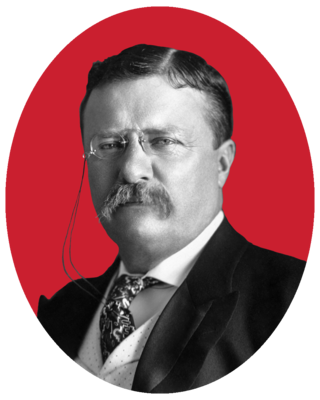
The 1904 Republican National Convention was held in the Chicago Coliseum, Chicago, Cook County, Illinois, on June 21 to June 23, 1904.

The 1912 Republican National Convention was held at the Chicago Coliseum, Chicago, Illinois, from June 18 to June 22, 1912. The party nominated President William H. Taft and Vice President James S. Sherman for re-election for the 1912 United States presidential election.

The 1960 Republican National Convention was held in Chicago, Illinois, from July 25 to July 28, 1960, at the International Amphitheatre. It was the 14th and most recent time overall that Chicago hosted the Republican National Convention, more times than any other city.
The 1932 Democratic National Convention was held in Chicago, Illinois June 27 – July 2, 1932. The convention resulted in the nomination of Governor Franklin D. Roosevelt of New York for president and Speaker of the House John N. Garner from Texas for vice president. Beulah Rebecca Hooks Hannah Tingley was a member of the Democratic National Committee and Chair of the Democratic Party of Florida. She seconded the nomination of Franklin Delano Roosevelt, becoming the second woman to address a Democratic National Convention.
The 1928 Democratic National Convention was held at Sam Houston Hall in Houston, Texas, June 26–28, 1928. The keynote speaker was Claude G. Bowers. The convention resulted in the nomination of Governor Alfred E. Smith of New York for president and Senator Joseph T. Robinson of Arkansas for vice president.

The 1936 Republican National Convention was held June 9–12 at the Public Auditorium in Cleveland, Ohio. It nominated Governor Alfred Landon of Kansas for president and Frank Knox of Illinois for vice president.
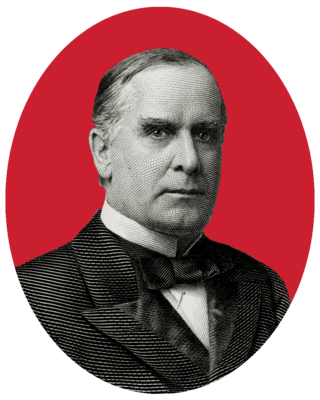
The 1900 Republican National Convention was held June 19 to June 21 in the Exposition Auditorium, Philadelphia, Pennsylvania. The Exposition Auditorium was located south of the University of Pennsylvania, and the later Convention Hall was constructed along the building's east wall. It was demolished in 2006.
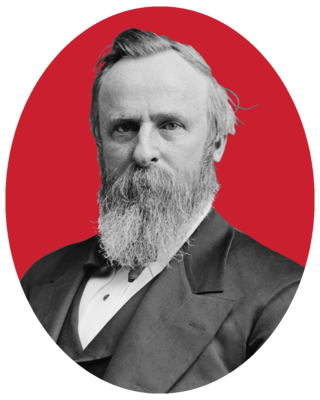
The 1876 Republican National Convention was a presidential nominating convention held at the Exposition Hall in Cincinnati, Ohio on June 14–16, 1876. President Ulysses S. Grant had considered seeking a third term, but with various scandals, a poor economy and heavy Democratic gains in the House of Representatives that led many Republicans to repudiate him, he declined to run. The convention resulted in the nomination of Governor Rutherford B. Hayes of Ohio for president and Representative William A. Wheeler of New York for vice president.

The 1920 United States elections was held on November 2. In the aftermath of World War I, the Republican Party re-established the dominant position it lost in the 1910 and 1912 elections. This was the first election after the ratification of the 19th Amendment, which granted women the constitutional right to vote.

From March 12 to June 7, 1924, voters and members of the Democratic Party elected delegates to the 1924 Democratic National Convention, in part to nominate a candidate for President of the United States in the 1924 election.

From March 9 to June 5, 1920, voters of the Democratic Party elected delegates to the 1920 Democratic National Convention, for the purposing of choosing a nominee for president in the 1920 United States presidential election.
Al Smith, Governor of New York, was a candidate for Democratic nomination for President of the United States in the 1924 election.
This is a list of endorsements for declared candidates in the Democratic primaries for the 1928 United States presidential election.
